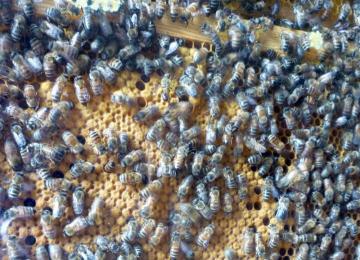Hive of Honey Bees

(c) Museum of Natural History, University of Oxford
Scientific name: Apis mellifera
Location: Upper Galleries, Wytham Woods Room
Honey Bees are an interesting case. They have three classes: a female queen, female workers and male drones. Their sexes cannot be compared or categorised in the same way that they are for mammals, however. The 'male' bees develop from unfertilised eggs and are, in effect, females. They possess only one set of chromosomes, contradicting what may be perceived as the 'normal’ male and female gender-binary. With some bees never reaching full development, It could even be considered that there is actually only one sex of honey bee.
Examples like the Honey Bee are important. It is simple to define humans as having male or female sex and a corresponding gender, classifying anyone who bends or deviates from pre-defined gender norms as odd and freakish. But, as we've seen, sex and gender variation are found throughout the natural world. Maybe it is time to think outside the box!
More information about Honey Bees can be found at OUMNH Life Collections: Bee Hive, and OUMNH Insects on Display
Clara Barker
Images